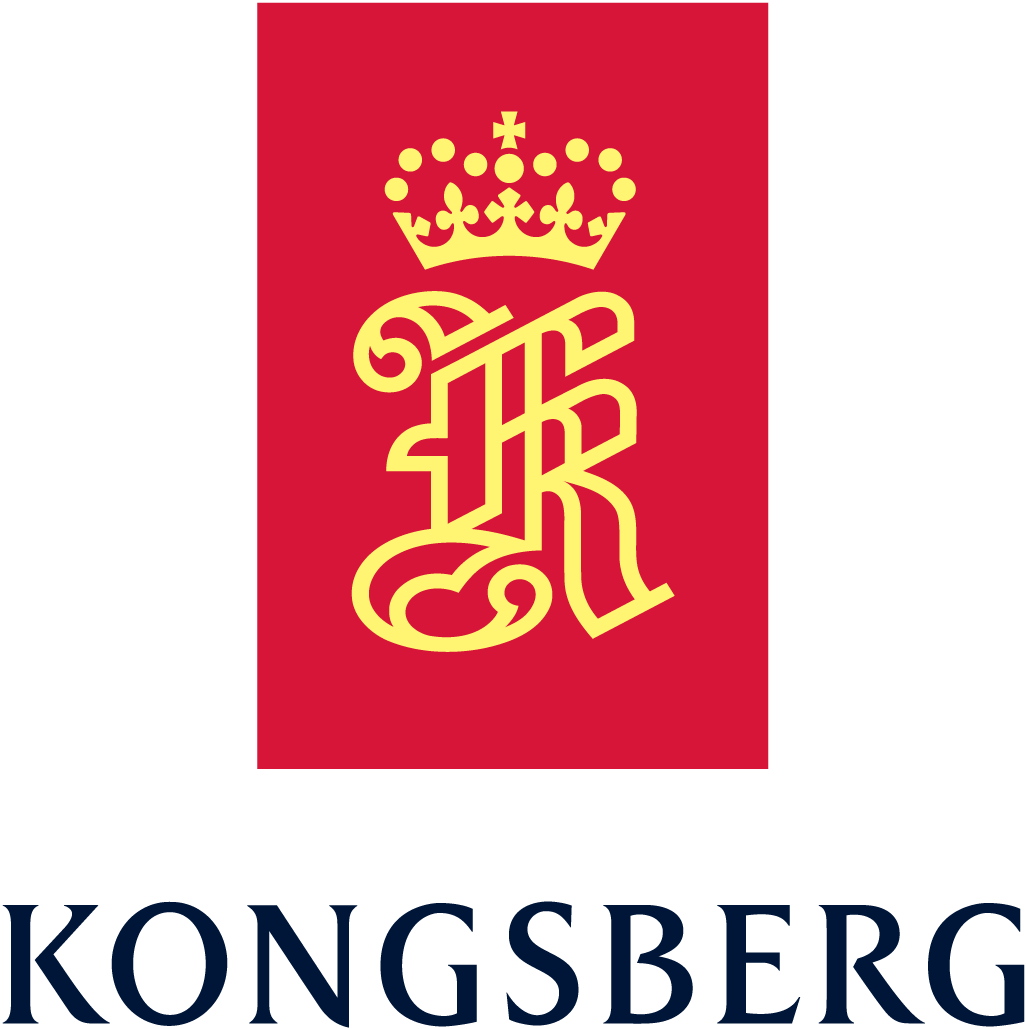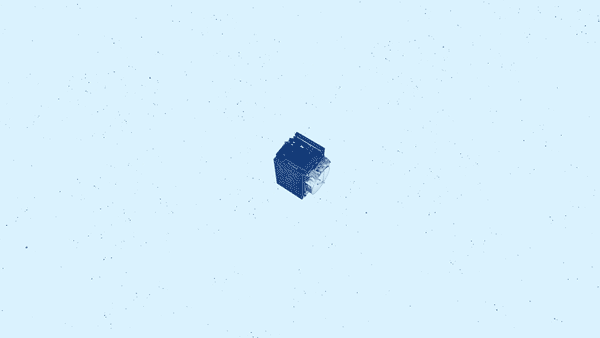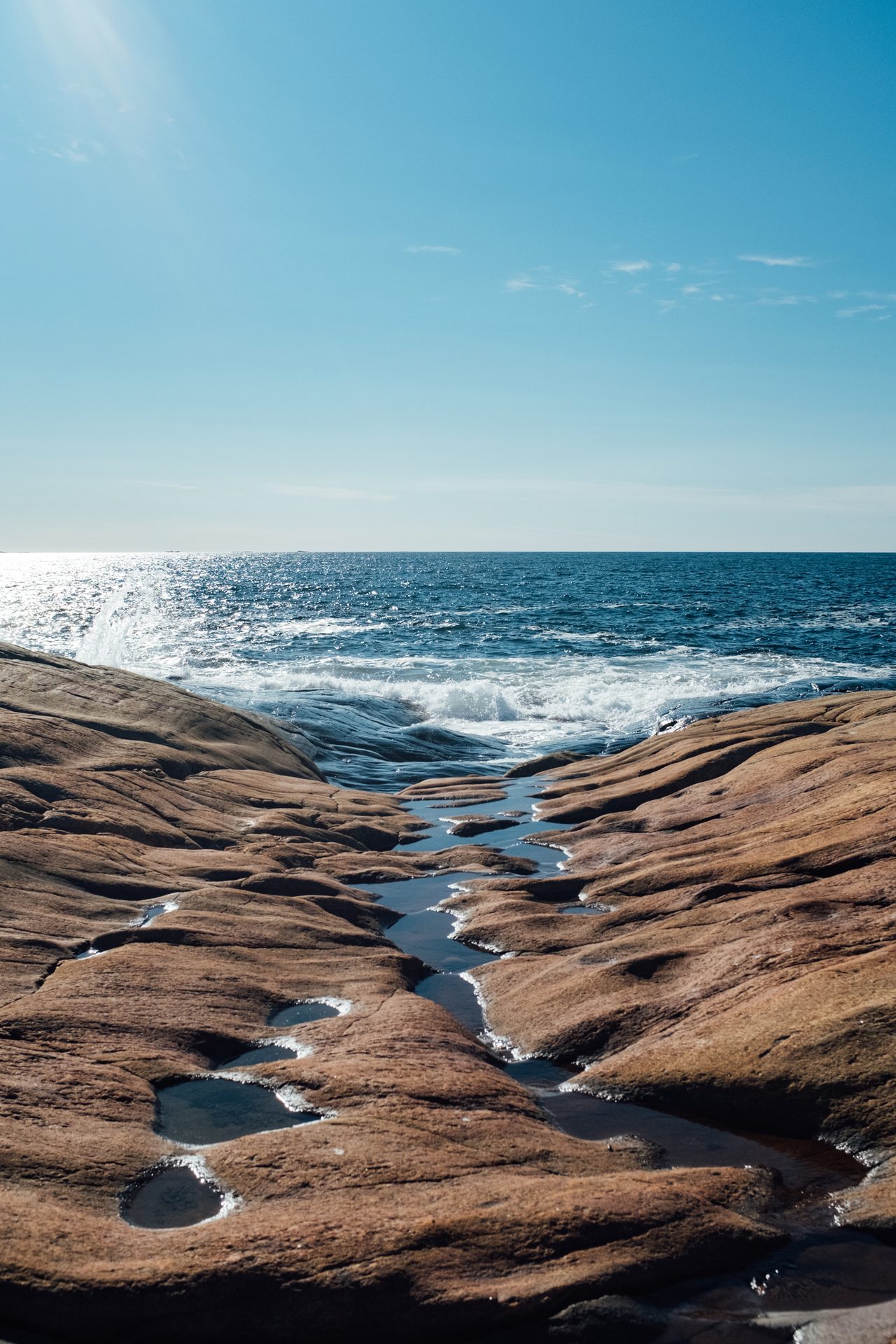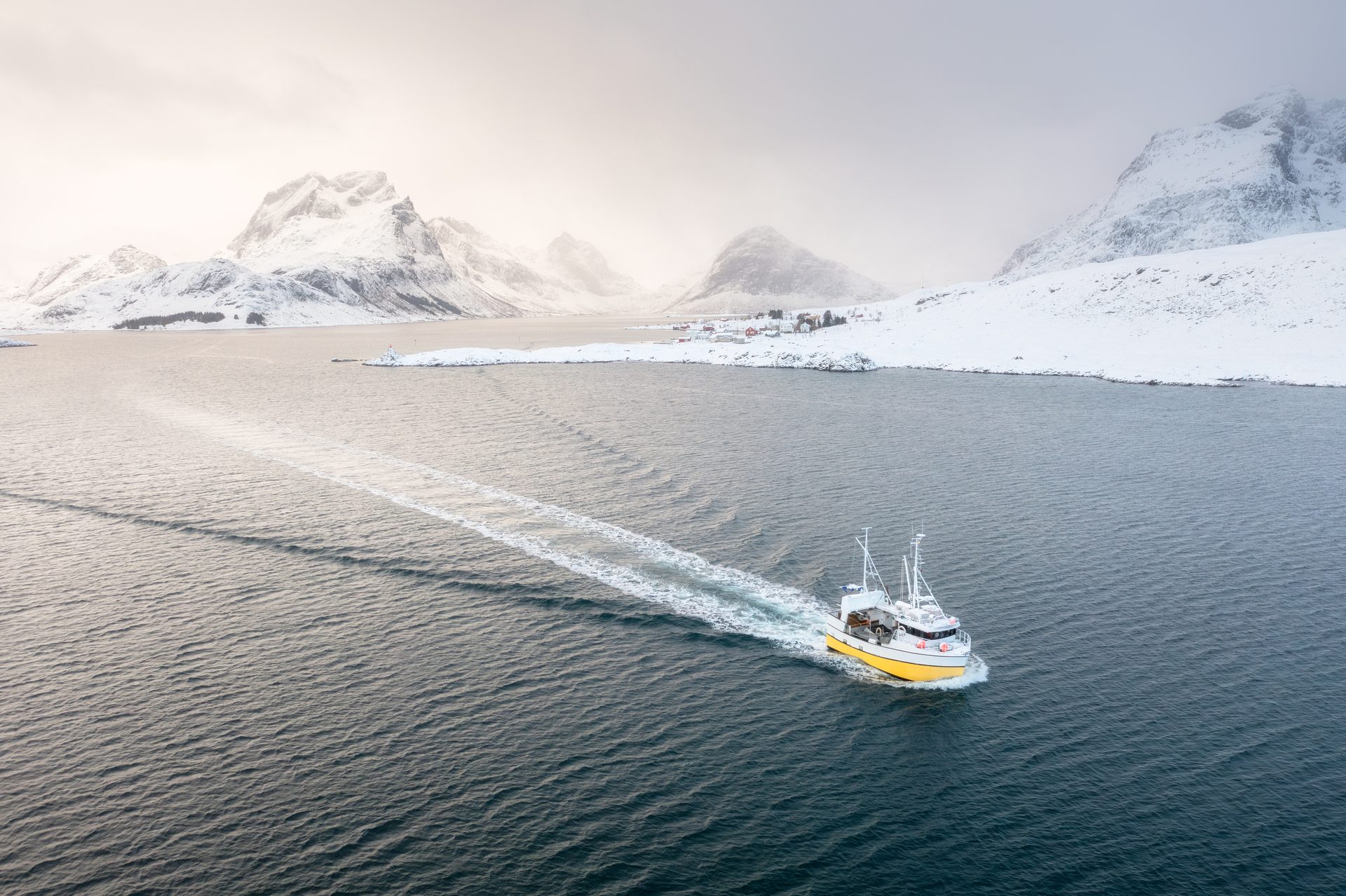– Confirming that we are picking up signals from the drone.
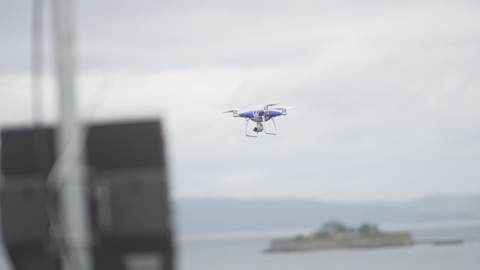
– Yes, we are picking up on the signals from the drone.

A lone drone is flying in a suspicious pattern over the Trondheim Fjord.

A small red dot appears on the screen in the operations room.
– Wow, is the drone alarm going off again? Are there other drones out there?

The camera quickly zooms in on an autonomous boat speeding through the Trondheim Fjord.
It takes only microseconds for the drone boat's movement to be detected and identified—and the camera provides visual confirmation.
Our critical infrastructure is under attack
This could have been a hybrid attack on an oil installation, sabotage at an airport, or a suspicious drone mapping the security of a gas facility. Fortunately, this situation was just a demonstration of Kongsberg Group's new drone detector at Pirbryggen in Trondheim.
– Another entity is testing an autonomous boat out on the fjord today. Our radar picked up the signals, says Cato Giil Eliassen, product manager at Kongsberg Discovery.
– Everything is working as it should.
A major international customer is visiting to test the detector against its systems. The entity states it is responsible for drone surveillance at international airports, sports arenas, and other critical infrastructure worldwide.
– Our technology makes it possible to detect something in the air and determine whether it's a drone, a bird, or an object. It also detects objects in motion on the ground and the water's surface, such as the autonomous boat, says Eliassen. He adds that the product is relevant for many different entities. Oil and gas installations, airports, port facilities, and military installations are just a few. Civilian "targets" like sports arenas and significant events are also potential users. During this year's Olympics in Paris, drones are used extensively to monitor the area and secure the airspace against other drones. Eliassen isn't surprised that celebrities on their luxury yachts will soon have detectors to reveal paparazzi drones.
Journalist: Björn Audunn Blöndal
Photo/video: Björn Audunn Blöndal, Jørn Grønlund, iStock
Cato Gill Eliassen
product manager, infrastructure, Kongsberg Discovery

There are over half a million drones in Norway. Most of them are owned by amateur pilots who fly for fun and often have yet to learn drone flying rules. Additionally, some tourists and visitors use their drones.
At worst, illegal drone flights can lead to collisions with other aircraft, potentially causing a crash. They also create extra work for air traffic services, the police, and other involved parties. In some cases, they lead to delays in departure and arrival traffic at airports, affecting everyone travelling.
What happens after a drone is observed will vary depending on the location and situation.
– There are different countermeasures against drones. In a civilian situation, so-called jammers can force the drone down. We call this a soft-kill effector. In a military situation, the detector can be connected to a weapons station that can shoot down the drone—or what we call a hard kill, says Eliassen.
The drone radar will document activity around an area, building, or installation.
After sabotaging the Nord Stream 1 and 2 gas pipelines, drone observations from various oil platforms and gas installations flooded in. The observations led the Petroleum Safety Authority Norway to issue a call for "increased vigilance" to all operators and shipowners on the Norwegian continental shelf.
– In 2023, Avinor recorded 1,450 unauthorized drone flights at the airports where we can measure this, says Cathrine F. Framholt, marketing and communications manager at Avinor. She adds that the number of unauthorized drone flights is higher but difficult to estimate.
– We don't have a description of a typical drone operator flying illegally. Still, there are some common characteristics: almost all are either unaware of the rules or highly careless, she says.
– That's why we take drone use around our airports very seriously, she says.
Cathrine F. Framholt
MARKETING AND COMMUNICATIONS MANAGER AT AVINOR
500,000 Drones

For example, this information can be beneficial to terrorists or hostile states.
The war in Ukraine has shown us that drones can also be highly effective weapons. Equipped with grenades or other explosives, drones can target everything from personnel to vehicles and buildings. On both sides of the war, modified commercial and specialized drones are mass-produced in makeshift factories.
Drones with Malicious Intent
Could these drones be spies seeking information? Or could they be attempts by hostile nations to create confusion and fear? People only observed these drones, and there is still significant uncertainty today about whether these sightings were drones.
Drones are often used by actors with less innocent intentions than curious tourists. Nearly all commercial drones are equipped with cameras capable of recording high-quality videos. Since the pilot can fly relatively unnoticed near buildings and installations, drones are well-suited for mapping and gathering information. This could include entrances to buildings, security systems, or vulnerable points, such as those related to electricity or fuel supplies.
The availability of such drones means we have good reason to secure critical infrastructure here in Norway.

For example, this information can be beneficial to terrorists or hostile states.
The war in Ukraine has shown us that drones can also be highly effective weapons. Equipped with grenades or other explosives, drones can target everything from personnel to vehicles and buildings. On both sides of the war, modified commercial and specialized drones are mass-produced in makeshift factories.
The availability of such drones means we have good reason to secure critical infrastructure here in Norway.
Drones are often used by actors with less innocent intentions than curious tourists. Nearly all commercial drones are equipped with cameras capable of recording high-quality videos. Since the pilot can fly relatively unnoticed near buildings and installations, drones are well-suited for mapping and gathering information. This could include entrances to buildings, security systems, or vulnerable points, such as those related to electricity or fuel supplies.
Drones with Malicious Intent
Could these drones be spies seeking information? Or could they be attempts by hostile nations to create confusion and fear? People only observed these drones, and there is still significant uncertainty today about whether these sightings were drones.
Critical infrastructure is more than just physical structures; it is the lifeline of our modern society. Protecting these systems is crucial to ensuring society can function normally, even in crises.
Critical infrastructure refers to the systems, resources, and services essential for society's security, health, economy, and welfare. It encompasses many sectors, including energy, water supply, transportation, finance, telecommunications, and healthcare. These structures are so important that their malfunction or destruction could negatively affect society.
Critical infrastructure includes the power that provides us with light and heat, the pipes that supply us with clean water, the signals in the air that give us mobile coverage, the servers that provide us with internet access, the planes that take us on vacation, and the ships at sea. Infrastructure is all around us. BankID is infrastructure.
Critical infrastructure is a term that frequently appears in the news, especially during serious incidents that could threaten societal functions. But what does this term mean, and why is this infrastructure so critical?
What is Critical Infrastructure?
Critical infrastructure is more than just physical structures; it is the lifeline of our modern society. Protecting these systems is crucial to ensuring society can function normally, even in crises.
Critical infrastructure refers to the systems, resources, and services essential for society's security, health, economy, and welfare. It encompasses many sectors, including energy, water supply, transportation, finance, telecommunications, and healthcare. These structures are so important that their malfunction or destruction could negatively affect society.
Critical infrastructure includes the power that provides us with light and heat, the pipes that supply us with clean water, the signals in the air that give us mobile coverage, the servers that provide us with internet access, the planes that take us on vacation, and the ships at sea. Infrastructure is all around us. BankID is infrastructure.
Critical infrastructure is a term that frequently appears in the news, especially during serious incidents that could threaten societal functions. But what does this term mean, and why is this infrastructure so critical?
What is Critical Infrastructure?
Layers of Technology
"We have become an increasingly complex society with layer upon layer of infrastructures and technologies," says Ola Borten Moe during a debate at Kongsberg Agenda on protecting critical infrastructure, titled "Are We Well Protected Enough?".
He explains that in the 1950s, if the power supply in Norway had been disrupted, we would have mainly managed. We all had wood-burning stoves at that time and would have fared reasonably well during a prolonged power outage.
"But today, it would be a complete crisis, not just because people would freeze, but also because computers, communication, data processing—everything—are powered by electronics, electronic communication, and those systems. The more advanced society is, the more vulnerable it becomes," says the former Minister of Oil and Energy.
Layers of Technology
"We have become an increasingly complex society with layer upon layer of infrastructures and technologies," says Ola Borten Moe during a debate at Kongsberg Agenda on protecting critical infrastructure, titled "Are We Well Protected Enough?".
He explains that in the 1950s, if the power supply in Norway had been disrupted, we would have mainly managed. We all had wood-burning stoves at that time and would have fared reasonably well during a prolonged power outage.
"But today, it would be a complete crisis, not just because people would freeze, but also because computers, communication, data processing—everything—are powered by electronics, electronic communication, and those systems. The more advanced society is, the more vulnerable it becomes," says the former Minister of Oil and Energy.
If the power were to go out for an extended period today, it could cripple vital services such as hospitals, transportation systems, and communication. Similarly, an attack on the water supply could endanger public health and create panic among the population.
– At some point, we must realize that it is impossible to protect everything all the time because of who we are and how advanced we are. At least not if the threat is a military superpower with the technology and capacity to carry out complex military operations with large bombs and explosives, hybrid attacks, or whatever it may be, says Borten Moe. He adds that today’s preparedness level is adapted to the peacetime we have had since the fall of the Berlin Wall.
Ola Borten Moe
Politician
If the power were to go out for an extended period today, it could cripple vital services such as hospitals, transportation systems, and communication. Similarly, an attack on the water supply could endanger public health and create panic among the population.
– At some point, we must realize that it is impossible to protect everything all the time because of who we are and how advanced we are. At least not if the threat is a military superpower with the technology and capacity to carry out complex military operations with large bombs and explosives, hybrid attacks, or whatever it may be, says Borten Moe. He adds that today’s preparedness level is adapted to the peacetime we have had since the fall of the Berlin Wall.
Ola Borten Moe
Politician
But now the situation has abruptly changed. The war in Ukraine has shown us that our enemies are not opposed to targeting critical infrastructure. The Russians have ruthlessly attacked dams, power plants, nuclear facilities, pipelines, ports, grain storage facilities, and other essential societal functions.
Out in the North Sea, we have 8,800 km of gas pipelines. We have 93 different oil installations. We have an extensive network of cables and communication systems. We are now planning 85 larger offshore wind farms – with power cables crisscrossing.
"We must take this seriously. The threats are numerous, complex, and difficult to detect."
"We at Kongsberg Gruppen have technology that can monitor and map both threats to critical infrastructure and the environment in the sea," says Geir Håøy, CEO of Kongsberg Gruppen.
He emphasizes that several instances show that infrastructure is particularly vulnerable – underwater and on land.
"This is something we must take seriously. The threats are numerous, complex, and difficult to detect. After the Nord Stream sabotage, additional protective measures have been implemented at facilities related to the offshore industry. However, our understanding is that this is not enough. The protection of critical offshore infrastructure must be significantly strengthened from current levels to meet the threats we face, and it is urgent," says Håøy.
"Kongsberg Gruppen, and the industry in general, have much to contribute here. But we need a shared situational understanding of what threats we defend against and where our critical points are."
"This spring, Norway and five other North Sea countries signed a joint declaration on cooperation to protect energy and telecommunication infrastructure in the North Sea. I want to commend the government for being proactive. Kongsberg Gruppen is eager to contribute to this important work."
I dag bygges to anlegg for protonterapi i Norge; ved Rikshospitalet i Oslo og Sykehuset i Bergen.


Geir Håøy
CEO of Kongsberg Gruppen
A Different Situation Today

Data Collection and Threats
- Data is collected from the seabed, where advanced sensors with sonar and radars are mounted on gas pipes and cables. The devices record everything from pressure and temperature, which can be helpful for climate research, to the movement of suspicious objects.
- Kongsberg Gruppen's business unit, Kongsberg Discovery, operates autonomous boats equipped with advanced sensors that can detect fish and other biomass in the ocean, as well as unwanted activity, such as foreign underwater vehicles.
- The Defense Research Institute and Kongsberg Discovery have jointly developed Hugin—an autonomous underwater vehicle (AUV) that can dive thousands of meters and inspect objects on the seabed with impressive detail.
- Kongsberg Satellite Services, KSAT, downloads images from space daily. Using various radar technologies and artificial intelligence, satellites can detect vessels that have turned off their legally required AIS (Automatic Identification System).
- Under Kongsberg Discovery's Seatex division, world-class drone detectors are being developed to detect, identify, and document unwanted drone activity.
Damage to Norwegian petroleum infrastructure will affect Norway and the recipient countries in Europe that rely on Norwegian gas. Such damage would be worse for Norway's "gas customers" than for the nation. We might face a minor economic setback while the recipient countries face an energy crisis and cold homes. After the gas pipeline sabotage between Russia and Europe, Nord Stream, in 2022, Norway has become Europe's most important energy supplier.

In a modern society, all physical infrastructures are under digital control. Enemies located far away in an unknown location can compromise physical facilities.
Cyber Threats
In an increasingly digitalized world, cybersecurity is also a critical component. Cyberattacks can cripple financial institutions, steal personal information, and disrupt national security operations. This is why the authorities greatly emphasize protecting these digital networks against threats.
Both Russian and Chinese cyber actors use sophisticated methods to infiltrate Norwegian systems. Zero-day vulnerabilities and social engineering are among the most used techniques. An example is the Government's Security and Service Organization 2023 cyberattack, where state actors exploited unknown vulnerabilities to access sensitive data.
The digital threat landscape is also more complex than the physical one. Here, we find a multitude of hacker groups operating for personal gain. Still, freelancers can also work on behalf of hostile nations—either to gather critical information or to sabotage.
In May 2021, Colonial Pipeline, one of the largest oil pipelines in the U.S., was crippled by a ransomware virus. The hacker group DarkSide carried out the spectacular attack, locked the company's data systems, and caused widespread fuel shortages. In the news, we saw scenes of panic and long lines at gas stations across several states. The attack resulted in Colonial Pipeline paying a significant ransom to unlock the systems. There is speculation that DarkSide may have indirect ties to the Russian authorities or at least operate with some degree of protection or tolerance from them.
Norway on a Dubious
Top List
There is no reason to believe that we in Norway will escape unscathed.
"Between three and eight percent of the attacks Microsoft registers globally are directed at Norwegians," says Ole Tom Seierstad, National Security Director at Microsoft Norway to Dagens Næringsliv.
He places Norway in the top 10 countries with the most attacks from Russia. The attacks are linked to "Norway's strategic location, oil and gas, and defense, and our position as the main supplier to the European power market."
Seierstad further claims that the actors behind the attacks are Russian state intelligence and security services, such as the military intelligence service GRU, the foreign intelligence service SVR, and the federal security service FSB.
National security is closely tied to protecting critical infrastructure. In Norway, the authorities have established various measures to ensure these vital systems are robust and resilient against man-made and natural threats. This includes everything from strict security protocols to collaboration with the private sector, which owns and operates many infrastructures.
Attention to critical infrastructure has increased in line with the growing complexity of the threat landscape. Climate change, terrorism, and advanced cyberattacks all represent potential dangers.
The authorities and private actors are continuously working to identify vulnerabilities and implement measures that can prevent or mitigate the consequences of potential attacks. The question is whether this cooperation is close enough.
Well-Kept Secret
"We have both the necessary technology and solutions for preparedness and security. So, it is about giving the business sector a clearer mandate, i.e., facilitating collaboration between the private sector and the authorities. It is important that Norway manages to harness the power of the business sector, which Kongsberg Gruppen represents, to solve the major societal challenges we face," says Liv Dingsør, CEO of Digital Norway.
She emphasizes that part of the problem is that the business sector needs to be invited to the table.
Digital Norway is dedicated to promoting digital transformation and innovation in Norwegian businesses. It offers training, resources, and collaboration opportunities to strengthen companies' digital competence and competitiveness. The goal is to help Norwegian companies use digital technologies to create growth and new business opportunities. Kongsberg Gruppen initiated the Digital Norway gathering and has been its owner since its inception in 2017. Now, the owner and membership group comprise leading companies representing most of Norway's critical infrastructure.
"Protecting Norway's energy infrastructure, which can easily be compromised, destroyed, or shut down, is challenging. It is also challenging in this work because many actors need better information about the infrastructure they should protect. And many absolutely should not have that information," she adds.
"That is a central part of the discussion. It's about collecting data and having better systems for managing, sharing, and protecting data across the public and private sectors. And here we have not done a good enough job in Norway," says Dingsør.


The annual threat assessment from the Norwegian Police Security Service (PST) and the Norwegian Intelligence Service (E-service) paints a severe picture of the threat landscape against Norway's critical infrastructure. As one of Europe's most important suppliers of natural gas, Norway faces significant threats from state and non-state actors trying to target both physical and digital infrastructure.
Russia poses one of the greatest threats to Norway's critical infrastructure. According to the E-service, Russian actors have been mapping Norwegian oil and gas infrastructure for several years. This mapping occurs physically and digitally, increasing the risk of sabotage and cyberattacks in a conflict situation. Russian military forces, especially the Northern Fleet, represent a persistent military threat to Norway, particularly in the northern regions.
China has also shown increased interest in Norwegian infrastructure. Chinese companies, often with close ties to the state, participate in tenders for constructing Norwegian infrastructure. This allows China to introduce technology with potential backdoors, which can be exploited for espionage and sabotage. Chinese intelligence services operate actively in Europe and use both digital intelligence and personnel on the ground to collect sensitive information.
In 2014, Aftenposten revealed that someone had set up fake base stations that could pick up signals from mobile phones. The concentration of these base stations was densest around the Parliament and the Government Quarter. 2018, a Russian was accused of espionage after tampering with the Parliament's copiers. According to PST, espionage is increasing. As of writing, a man in his 30s is under suspicion by PST for serious espionage. He is suspected of having handed over sensitive information to Chinese intelligence.
"The intelligence threat from China is significant. PST's counterintelligence chief, Inger Haugland, stated in the annual threat assessment earlier this year that PST expects the threat to increase due to the deteriorating relationship between China and the West, as well as China's desire to control supply chains and position itself in the Arctic."
PST Warns
Increased Vigilance
PST and the E-service emphasize the importance of vigilance and cooperation between public and private actors to prevent and avert potential attacks. They urge continuous updating of security measures and emergency plans to handle threats to national security effectively.
This comprehensive threat assessment shows that Norway faces complex and varied threats to its critical infrastructure. Therefore, a holistic and proactive approach is required to ensure the nation's security in the face of these challenges.
"Norwegian businesses possess world-class security and preparedness services," Dingsør emphasizes.
"We are just not very good at telling people about it," she adds.
"These preparedness or security services are something we absolutely need here at home, but other countries will also greatly need them in the future. It is important for us to think about our business and industrial potential," she says.
Dingsør sees the outlines of a new export success. Today's countries must protect themselves and their infrastructure from malicious attacks by countries or organizations and from major accidents or natural disasters.
"This is an area where we have all the prerequisites for success," she concludes.

More stories from Kongsberg Gruppen
HISTORIE



